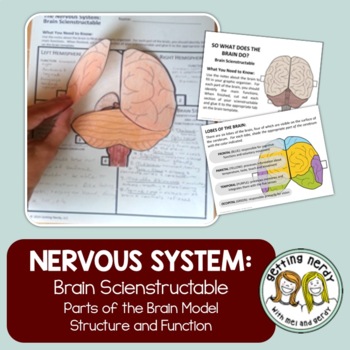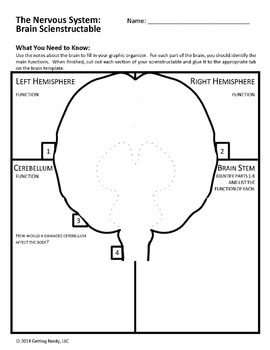Nervous System - Brain Model, PowerPoint, and Notes
- Zip
- Google Apps™

What educators are saying
Description
Delve into the function of the two hemispheres of the cerebrum, the cerebellum, and the workings of the brainstem in this neat lift-the-flap brain sceinstructable.
WHAT'S INCLUDED in this 1 DAY MINI-BUNDLE:
• 9 EDITABLE PPT slides with notes about the regions of the brain
• 2 NON-EDITABLE PDF pages
• Answer key
STUDENTS WILL:
• Color, cut out and glue the model together
• Take notes using the PPT
CHECK OUT OUR OTHER HUMAN BODY PRODUCTS :
• Human Body Systems - Interactive Notebook Activity Pack
• Human Body Systems Bundle - STEAM Science Centers / Lab Stations
• Human Body Systems - Word Wall
• Human Body Systems - Task Cards
• Integumentary system - Human Body "I Have . . . Who Has?" Game/Activity
SEE HOW THIS LESSON ALIGNS WITH THE NGSS, TEKS or GSE
Because we have created many of our own graphics or have purchased licenses to other graphics with permission, we cannot offer our resources in editable format unless otherwise stated.
TERMS OF USE (TOU):
All rights reserved by GETTING NERDY®️
• This product is to be used by the original purchaser only
• Intended for classroom and personal use only
• Copying for more than one teacher, classroom, department, school, or school system is prohibited
• This product may not be distributed or displayed digitally for public view
Failure to comply is a copyright infringement and a violation of the Digital Millennium Copyright Act (DMCA). Clipart and elements found in this PDF are copyrighted and cannot be extracted and used outside of this file without permission or license.
Brain Scienstructable Model © 2012 to present Getting Nerdy ®️ All Rights Reserved
www.gettingnerdyscience.com





